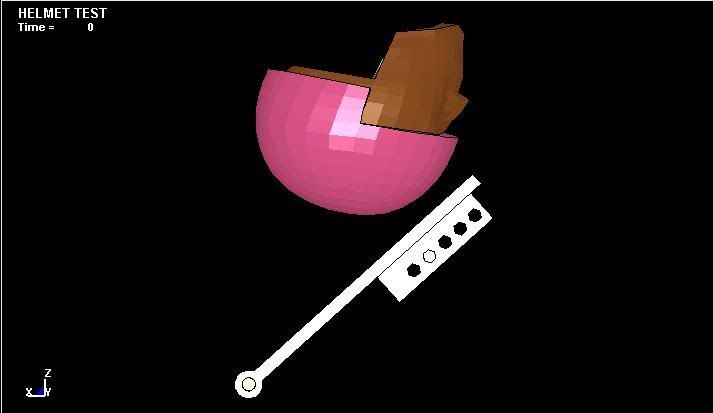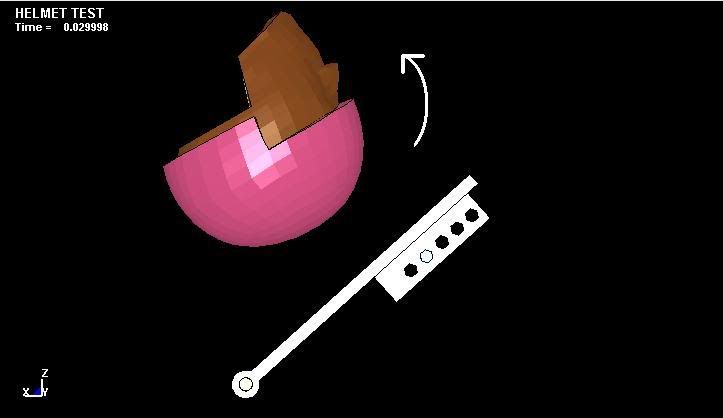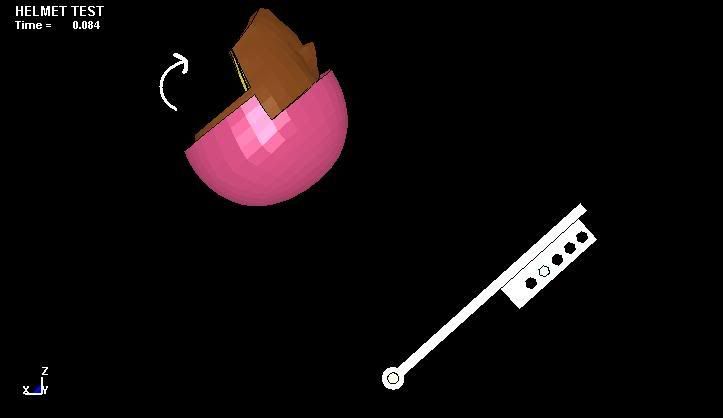Kimpan
Mechanical
- May 30, 2008
- 39
I am doing a finite element analysis using LS-DYNA of a helmeted head form being struck on an inclined plate.
The helmet and head is given an initial speed of 5.3 ms in the Z direction. As a result of the impact to the inclined plate, the helmeted head starts to rotate in the Y axis. The problem I have is that after a while, the helmeted head starts to rotate in the opposite direction for some reason. I can not understand the cause of this.
When I run the same simulation without the helmet I do not see this problem.
The helmet in these pictures is made up of elements that have been extended from the head form. It is 2cm thick and of the material crushable_foam. The outer part of the helmet is a linear elastic shell.
I have checked so that the centre of gravity of the head form is located in the centre of the head as it should be and that the inertia properties of the head are set.



The helmet and head is given an initial speed of 5.3 ms in the Z direction. As a result of the impact to the inclined plate, the helmeted head starts to rotate in the Y axis. The problem I have is that after a while, the helmeted head starts to rotate in the opposite direction for some reason. I can not understand the cause of this.
When I run the same simulation without the helmet I do not see this problem.
The helmet in these pictures is made up of elements that have been extended from the head form. It is 2cm thick and of the material crushable_foam. The outer part of the helmet is a linear elastic shell.
I have checked so that the centre of gravity of the head form is located in the centre of the head as it should be and that the inertia properties of the head are set.



